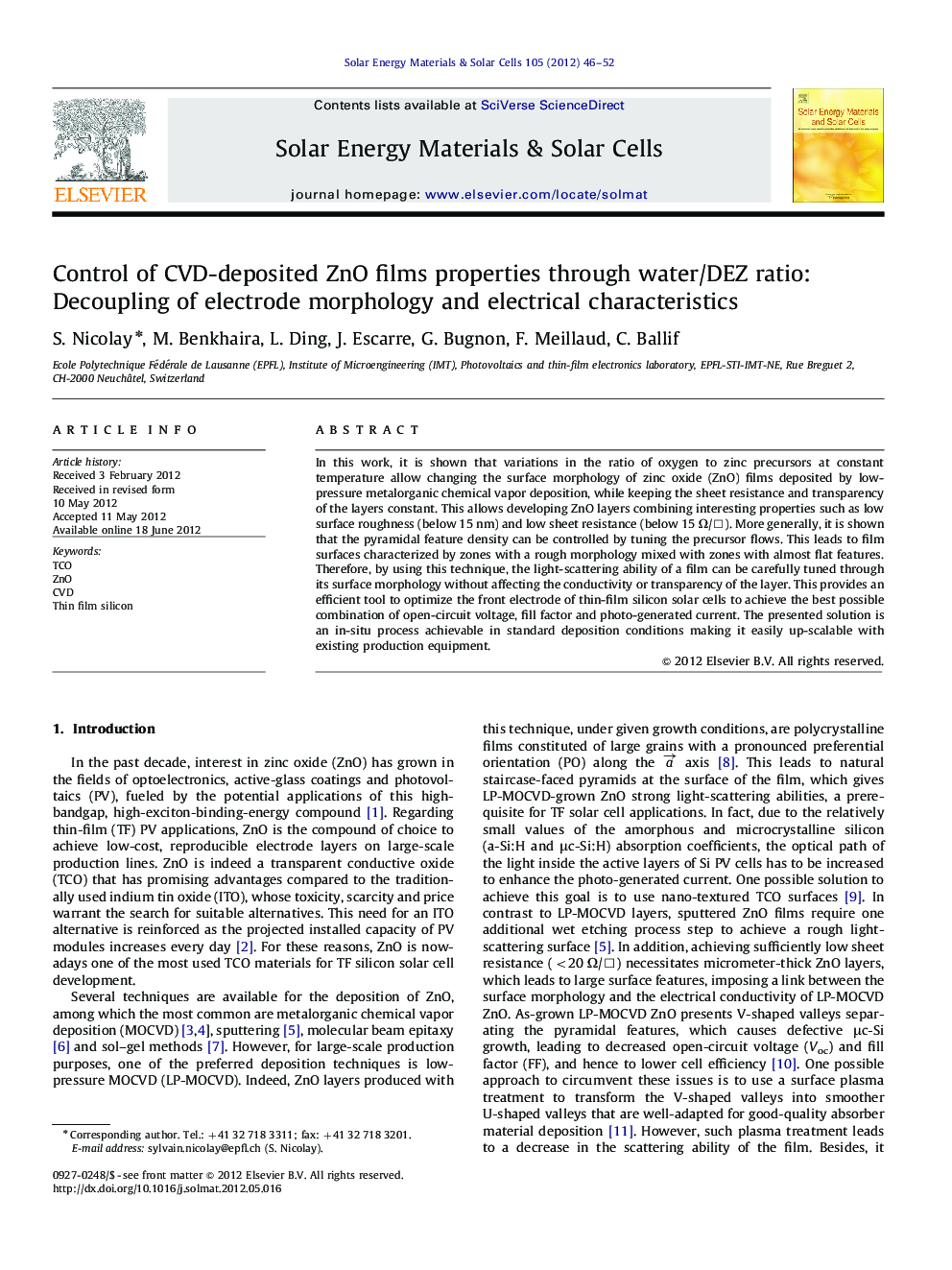| Article ID | Journal | Published Year | Pages | File Type |
|---|---|---|---|---|
| 78946 | Solar Energy Materials and Solar Cells | 2012 | 7 Pages |
In this work, it is shown that variations in the ratio of oxygen to zinc precursors at constant temperature allow changing the surface morphology of zinc oxide (ZnO) films deposited by low-pressure metalorganic chemical vapor deposition, while keeping the sheet resistance and transparency of the layers constant. This allows developing ZnO layers combining interesting properties such as low surface roughness (below 15 nm) and low sheet resistance (below 15 Ω/⎕). More generally, it is shown that the pyramidal feature density can be controlled by tuning the precursor flows. This leads to film surfaces characterized by zones with a rough morphology mixed with zones with almost flat features. Therefore, by using this technique, the light-scattering ability of a film can be carefully tuned through its surface morphology without affecting the conductivity or transparency of the layer. This provides an efficient tool to optimize the front electrode of thin-film silicon solar cells to achieve the best possible combination of open-circuit voltage, fill factor and photo-generated current. The presented solution is an in-situ process achievable in standard deposition conditions making it easily up-scalable with existing production equipment.
Highlight► We developed smooth and conductive LPCVD ZnO films. ► We developed fine control of the surface pyramid density. ► Possible to control the defect density in Si without post treatment of ZnO electrode. ► The new process is easily industrially scalable.
